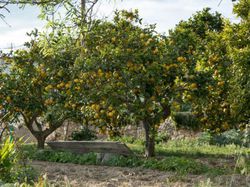 The incredible diversity of the different Citrus species and the sheer endless number of varieties are simply impressive. From the original Citrus species C. aurantifolia (limes), C. maxima (grapefruit), C. medica (citron), C. reticulata (mandarin orange), the species and varieties known today have developed over several generations of mankind. Most people who hear the name 'citrus' may first think of the lemons and oranges that we know mainly from the winter months.
The incredible diversity of the different Citrus species and the sheer endless number of varieties are simply impressive. From the original Citrus species C. aurantifolia (limes), C. maxima (grapefruit), C. medica (citron), C. reticulata (mandarin orange), the species and varieties known today have developed over several generations of mankind. Most people who hear the name 'citrus' may first think of the lemons and oranges that we know mainly from the winter months.
From now on, we want to make a part of this diversity available to you with our Switrus® and Citrobella® citrus young plants, so that everyone can bring the Mediterranean feeling of life with lemons into their own garden. For the time being, however, we have to limit ourselves to only lemons, but we already have new species and varieties in the pipeline.
Citrus plant production in Central Europe
By default, citrus plants in Europe are mainly and preferably produced in the southern countries, such as Italy or Spain. From there, the finished product is either sold directly in Central Europe or the semi-finished product is produced north of the Alps during a growing season. Both approaches are standard professional practice and there is nothing to be said against them, since many citrus plants need warmer climates to grow both well and healthy.
However, with increasing awareness of sustainability, the transport of citrus plants through half of Europe is no longer so easy to explain. However, there are not only transport-related issues that suddenly arise. From the point of view of plant hygiene and the Damocles' sword of the potential spread of quarantine pathogens, for which among other things citrus plants also serve as hosts, the transport of such plants over several 1,000 kilometres can in the worst case become a game of roulette.
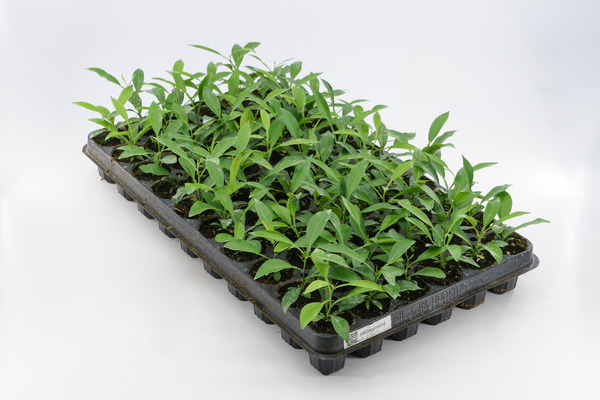
Picture: Young plants of Citrus junos in a standard tray of 60
With our citrus young plants of the groups Switrus® and Citrobella® it is now also possible to produce citrus plants north of the Alps – without having to resort to plant material from southern Europe. However, there is still a drop of bitterness. At the moment, we can only offer an extremely basic assortment, but the beginning has been made.
Citrus young plants from Lubera Edibles
Like all of our young plants, apart from the fruit tree young plants, we also produce the citrus young plants on their own roots and in our standard 60-cell tray. The young plants are produced fresh in early spring so that they can be delivered in the summer when the climatic conditions are most ideal for producing citrus plants.
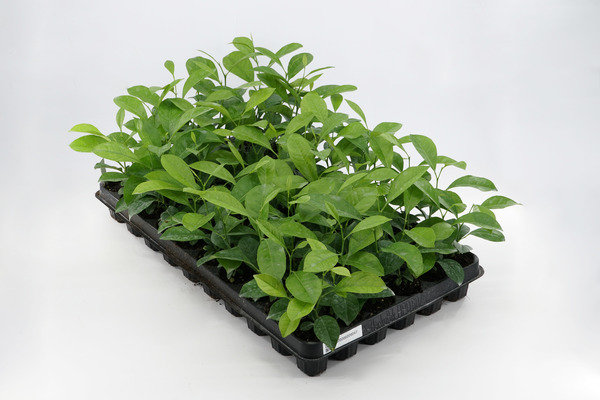
Picture: Young plants of Citrus volkameriana in a standard tray of 60
The advantages of citrus young plants at a glance
- Vegetatively propagated on their own roots
- Uniform plant quality
- Vigorous and well-developed young plants
- Young plants from German production, no problems with quarantine pathogens (e.g. Xylella)
General procedure of a citrus plant production
In the following, we want to give you a schematic overview of how a citrus plant production could look like. This scheme serves only as a rough outline and is based on data and experience gathered by our Lubera® colleagues in their own production.
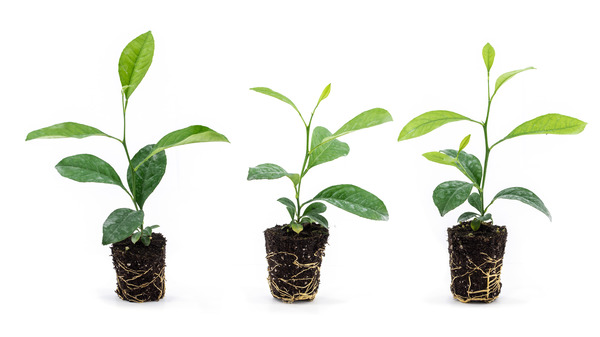
Picture: Young plant quality of von Citrus volkameriana
Due to Lubera's target sales size of citrus plants in a C5 (5 litre) container, the production period extends over two years and starts in the first year with an intermediate step in a C1.3 (13 cm) square pot. Only in the second year is this intermediate product then repotted to its final size.
The outlined production sequence
Intermediate cultivation (1st year):
- Delivery of the young plants in approx. weeks 25 -28
- Potting in the appropriate intermediate size (9 cm - 15 cm)
- Substrate: standard nursery substrate, in a slightly acidic pH range (5.5 - 6.5) with a slow release fertiliser (3-4 months), the quantity depends on whether liquid top-up fertiliser is used
- Place under glass or foil (possibly heatable)
- Frost-free overwintering at 5°C - 8°C (if possible not too dark)
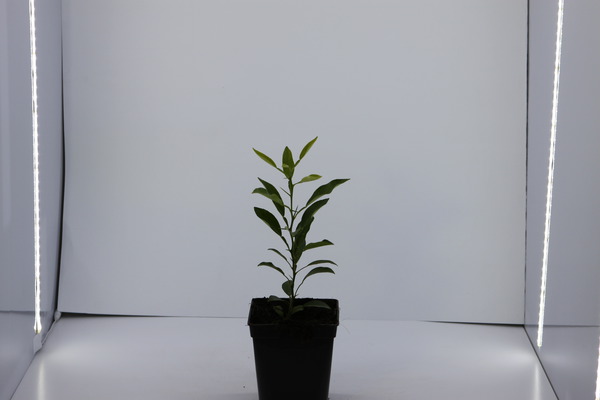
Picture: Result at the end of the first year, here Citrus junos in a 1.3 litre pot.
Final cultivation (2nd year):
- Repot the intermediate size into the final size, starting at the end of March (max. C5)
- When repotting, shorten the tips of the longest shoots to achieve better branching
- Substrate: see intermediate cultivation
- Fertiliser: slow release fertiliser (5-6 months), the amount depends on whether liquid top-up fertiliser is used
- Place under glass or foil (heatable and should be able to maintain a minimum temperature of 5°C until around mid-May)
- Pruning: depending on the plant structure; max. 1x slight pinching
- Ready for sale: from mid/end of August (depending on the size of the final pot)
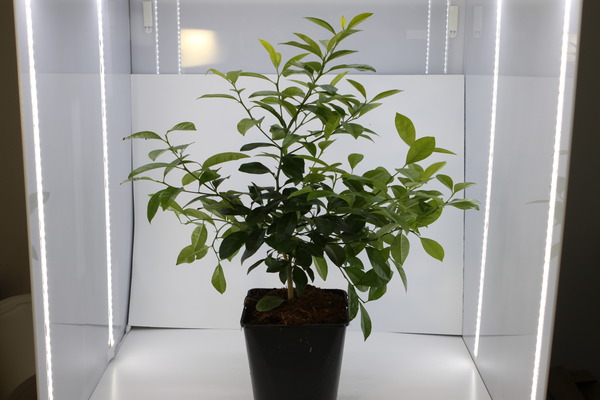
Picture: Result at the end of the second year, here Citrus volkameriana in a 5 litre pot.
Conclusion and outlook
As you can see, it is quite possible to produce hardy and cold-tolerant citrus plants north of the Alps. With the initial assortment, only lemons are covered for the time being, but the beginning has been made and whoever wants to can now produce regional citrus plants. Assortment extensions, towards more choice and diversity, are already in the works. So let us surprise you with the exotic species and varieties we will be adding to our range in the future.
